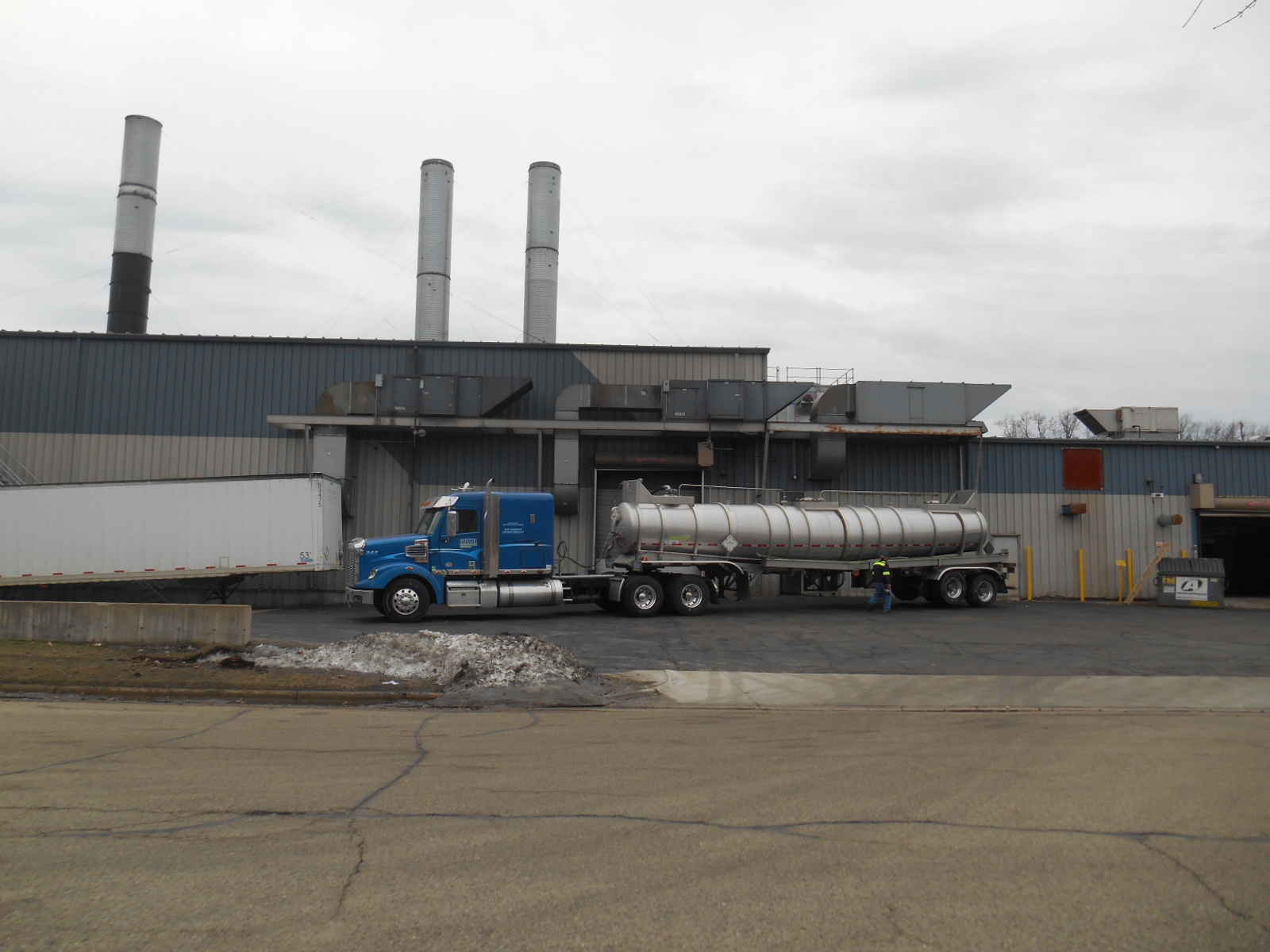Above: View of Madison-Kipp’s Fair Oaks factory from the low-income apartments across the street.
Clean Air Madison, MEJO, and Kipp neighborhood activists tried for many, many years–to no avail–to convince DNR, Public Health Madison Dane County, and/or the Wisconsin Department of Health Services to monitor toxic air pollution from Madison-Kipp Corporation and assess its health effects among neighborhood residents. See here and here. Sadly, some neighborhood activists who lived right next to Kipp–so they were heavily exposed to Kipp’s pollution–died during the battles–see here and here. In 2017, the City of Madison approved apartments, including low-income apartments, right across from Kipp’s Fair Oaks facility, but government agencies refused to monitor toxic air particulates residents there will be exposed to. Now, the SASY neighborhood is taking matters into their own hands and monitoring air themselves. They need financial support–please contribute! See details at the end of the article.
SASY Neighborhood Association will monitor Kipp neighborhood air quality
By Steve Klafka, longtime Kipp resident, activist and professional engineer
In 2018, the SASY Neighborhood Association took advantage of the availability of low cost air sensors to begin monitoring the air quality in the neighborhood. This network was established in response to the approval of two new multi-story apartment buildings directly across the street from the Madison-Kipp aluminum die casting factory on Fair Oaks Avenue. The city alder and plan commission approved the two buildings despite concerns raised by neighborhood residents about historical air quality problems adjacent to Kipp. Prior to the approval of the two apartment buildings, the attached report was provided to then Alder Rummel explaining how high PM2.5 concentrations are expected around the Kipp factories.
The sensors chosen for the network are available from purpleair.com (PA). They continuously measure particulate matter less than 10 microns (PM10) and those less than 2.5 microns (PM2.5). PM emissions are released from all the stacks at the Kipp factories from melting aluminum and die casting operations. Sensor measurements are continuously uploaded to the PA website using a wireless network provided by the person hosting the sensor. There are currently six sensors in operation. Sensors are located on the four sides of the Kipp factory on Atwood Avenue. There are two sensors near the Kipp factory on Fair Oaks Avenue. It would be helpful to site more sensors in the new apartment buildings adjacent to the Kipp factory on Fair Oaks Avenue, but it is difficult to find hosts for the sensors.
You can see current and historical sensor measurements on the PA website. The figures below show the sensor located on the splash pad pump house at the Goodman Center on the north side of the Kipp factory on Atwood Avenue, and the sensor located at a house on Waubesa Street on the west site of the same factory.
Unlike the Wisconsin DNR monitoring site near East High School designed to measure regional PM10 and PM2.5 concentrations, the SASY network is measuring neighborhood scale air quality. On any given day, the sensors may show elevated concentrations due to emissions from Kipp, or smoke from residential wood stoves and back yard fire pits. The figure below is an example of elevated PM2.5 concentrations measured on February 6, 2019 on the east side of the Kipp factory on Atwood Avenue. On this day, the wind was blowing from the west to the east.
USEPA is now supporting the use of low cost sensors to supplement measurements from the regulatory monitors operated by federal and state agencies. You can learn more the low cost sensors on the USEPA website, Air Sensor Toolbox, at https://www.epa.gov/air-sensor-toolbox. A friend of mine living in San Francisco area related how he used the measurements by PA sensors to decide where it was safe to ride his bike during nearby forest fires.
Plans are underway to evaluate the SASY sensor network measurements collected since 2018. A proposal has been provided by UW students to determine if the neighborhood meets the clean air standards, compare sensor measurements with those from the DNR monitor near East High School, and determine if our air quality is impacted by specific emission sources like the Kipp factories. Since the PA sensors use light rather than weight to measure PM concentrations, their measurements are not directly comparable to those obtained from federal and state approved air quality monitors. The study would use correction factors developed by USEPA and DNR. It is likely the study will show that the Kipp factories are contributing to elevated and unhealthy levels of PM in the SASY neighborhood. For this reason, the SASY Neighborhood Association, which originally approved the purchase of the sensors, will not fund the study to evaluate the measurements. Instead, a gofundme campaign has been started to raise money for the air quality study. You can read about and contributed to this campaign at: https://www.gofundme.com/f/neighborhood-air-quality-study?utm_campaign=p_cp_url&utm_medium=os&utm_source=customer
If you would like to learn more about the SASY sensor network or are interested in installing your own sensor, please contact Steve Klafka at steven.klafka@gmail.com

